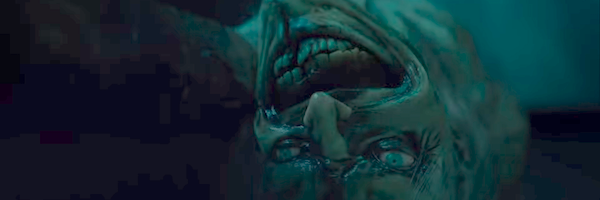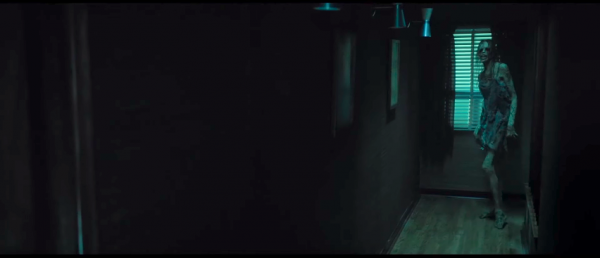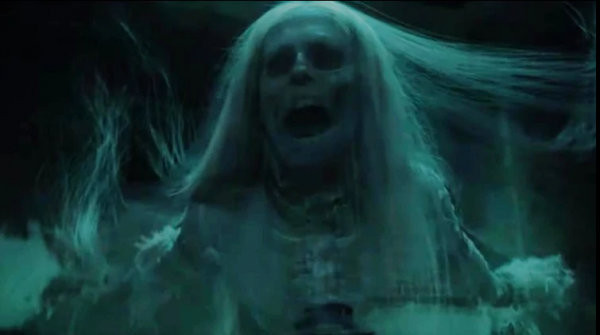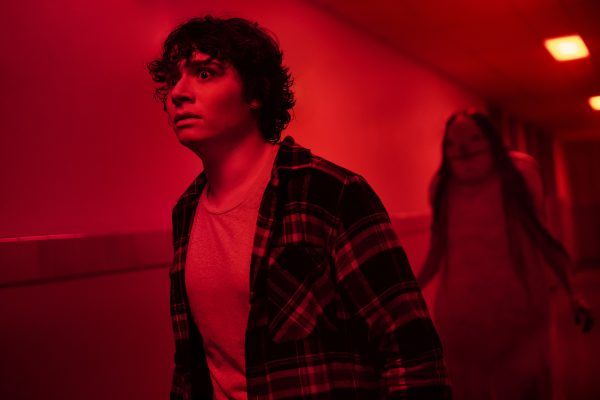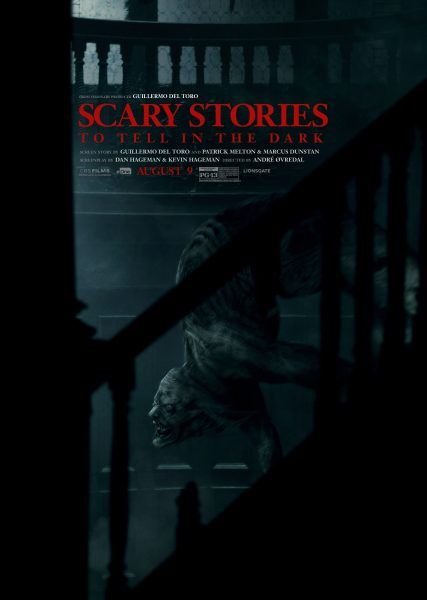Several times throughout Scary Stories to Tell in the Dark, I found myself thinking of Hobbs & Shaw. Listen, I know there's little connection to be made between a ghost-and-ghoul spookshow based on a children's book and a Fast & Furious spinoff where The Rock quite literally lassos a helicopter with a tow chain. These are very different cinematic experiences. But I kept returning to Hobbs & Shaw's set-pieces, and how batshit bananas insane they may look, there isn't much weight to that CGI-heavy madness. There's no satisfying Action Oomph™ behind a completely digital Jeep landing on an equally computer-crafted flatbed because ones and zeroes just don't crunch like the real thing.
Scary Stories to Tell in the Dark, a relatively small spine-tingler with about 1/1000 the stakes of Hobbs & Shaw, has some serious weight behind its set pieces. The monsters that populate Scary Stories plod and stalk their way across the screen and you feel every bump in the night. That is completely on the decision of director André Øvredal and producer Guillermo del Toro to create their horrors practically through sculpture, make-up, plaster, and a few contortionist pals to put it all together. Without that decision, Scary Stories is a well-shot but forgettable collection of jump scares; with it, the movie is a genuine gateway creature feature that's going to traumatize more than a few kids into becoming horror heads for years to come.
“It’s 90% practical. CGI is mostly for enhancement," Øvredal told Collider when we caught up with the director last week. "It was a decision that was made very early. I was coming into it thinking, 'How are we going to do these creatures?' And Guillermo immediately said, We’re going to do it for real. We’re going to create these creatures.' And that was fantastic."
That is fantastic, you beautiful little troll-hunting madman. From the moment I first saw that wondrous Milicent Patrick-designed Gill-Man hand clawing its way out of an Amazon riverbank in Creature from the Black Lagoon, I've been obsessed with practical monsters. The rubber-footed Kaiju destruction of Godzilla through all 32 of those Toho films. H.R. Giger's unspeakable sex-beasts come to life in Alien. The ever-morphing abomination chomping through wrists in John Carpenter's The Thing. Even the mind-bogglingly physical Tyrannosaurus Rex in Jurassic Park. What first brought me to horror was the impossibly grotesque somehow shot right there in-camera, slime-covered, scaly, and wonderful.
I can't even say it's a lost art, per se. We're only two short years removed from an objectively sexy fish monster winning Del Toro both Best Director and Best Picture in the same night. There's no shortage of more under-the-radar horror filmmakers keeping that flame alive, from the "Amateur Night" segment in V/H/S to the Carpenter-inspired grotesquery of Anthony DiBlasi's Last Shift to the wolf-beasties in Adrián García Bogliano's English debut, Late Phases. Or, hell, over on TV Ash vs. Evil Dead kept up that Sam Raimi gooiness for three years, The Walking Dead stays committed to genuinely groundbreaking zombie effects even as the storytelling rots away, and our dearly departed Swamp Thing was a practically mossy delight.
But much like the digital car chases in Hobbs & Shaw are always going to be just a little bit of a bummer compared to, say, Tom Cruise just actually throwing his body all willy-nilly into Paris traffic, the increased presence of CGI creatures in horror is going to keep making things like Scary Stories to Tell in the Dark feel that much more special. The film's uneven script by Dan and Kevin Hageman kind've keeps you from falling in love with these characters, so I fell in love with the monsters instead, so beautifully were they brought to horrible life.
Take that Pale Lady, the marshmallow-esque haunt that stalks Chuck Steinberg (Austin Zajur) through the red halls of a mental hospital. There's clearly some digital touch-ups to the creature's face but the actual terror comes from that base sculpt job, which looks grotesquely smooth even under bright light. Here's del Toro talking to Yahoo:
“You’re not making a very complex mechanical monster; it’s a paint and sculpting job, and the key to the character is that she looks benign. Her expressions are very minimalistic and creepy, so you have to sculpt the weight, the folds, the smile and the sort of twinkle in the eye. You also have to paint it so she can exist under a red light, but when you have skin that pale, it can become completely white on camera. We used a sort of Memory Foam for the material, so that [Austin] could sink into her chest.”
Or there's that unnamed ghost with a missing big toe who comes calling for her severed appendage from Gabriel Rush's Auggie Hilderbrandt. The toe-less phantom occupies such a small sliver of screentime that the effort to turn the already skeletal Javier Botet into a walking corpse almost doesn't seem worth it. But it all comes back to the weight of the character; the physical presence of Botet lumbering his gaunt frame down a hallway turns a scary shot into a paralyzing moment.
The movie's monstrous main event is, of course, The Jangly Man, an original creation mashed up from several of Alvin Schwartz's source stories—mainly the endlessly unsettling "Me Tie Dough-ty Walker!"—played by rubber-boned contortionist Troy James. (Who is also responsible for Channel Zero's Pretzel Jack, a modern horror icon who deserves your respect.) The Jangly Man is the sum total of why horror needs more practical monsters, a physical figure that, thanks to James' uncanny skill, is somehow real and wrong at the same time. I'm not sure there's a better illustration of that then this story, told by James himself to Consequences of Sound, about genuinely scaring the shit out of Rush on set:
"Gabriel Rush, who plays Auggie, [dressed as Pierrot for Halloween]. We were doing a camera test where I was showing off the Jangly Man’s moves, and when I started there were four kids. But when I finished there were three kids. I asked, “Where’d the clown go?” And Stella [actress Zoe Colletti] said, “Oh, he doesn’t like you.”
-
Later, the power went out on set. It’d gone out everywhere, including the trailers. Of course, this is my time. I have to take advantage of this. I had the trailer right beside Gabriel, and I decided to pull a Jangly Man. As he’s coming up between the trailers, I run at him upside-down, and I’d never seen anyone jump and run so fast."
We love horror because it not only gives us a safe space to be scared, but to feel what it's like to come out on the other side of that fear okay. That feeling is intensified when the fear feels real, and the fear feels real when the monsters up on the screen are breathing, are crawling, are thumping along the floor. No matter its flaws, Scary Stories to Tell in the Dark keeps that practical monster train a-rollin', one legit jangle at a time.

